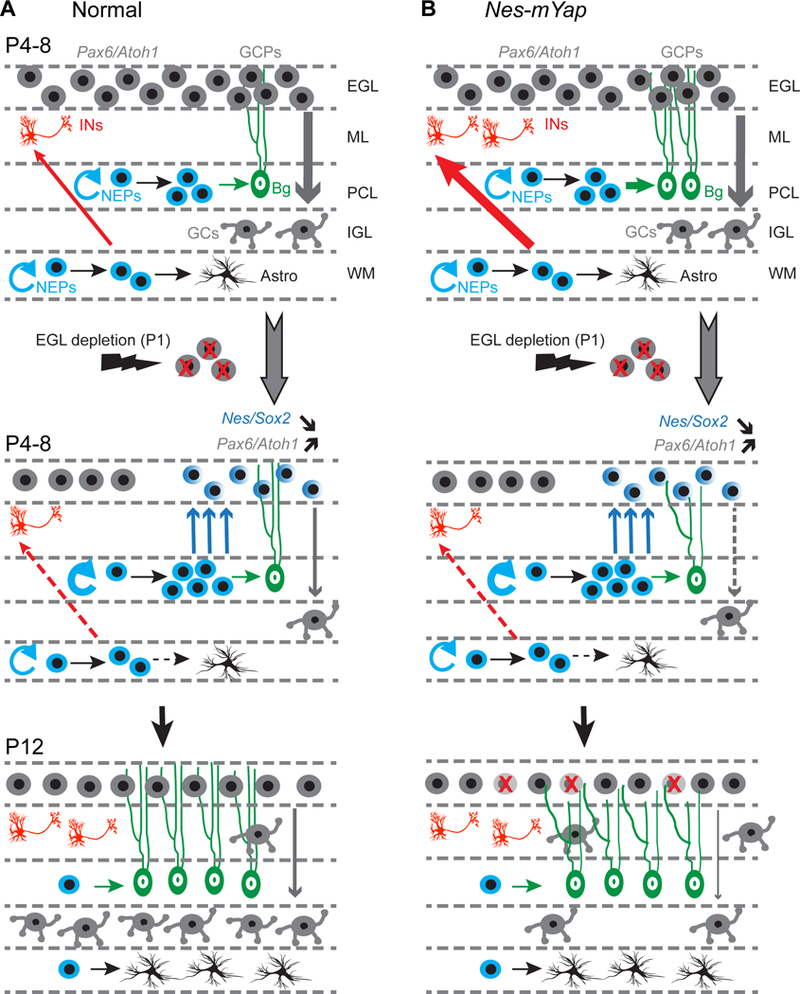Figure 9. Model of the cellular responses during the development and regeneration of neonatal cerebellum in normal and Nes-mYap mice after irradiation at P1.

(A) Depletion of the External Granule Layer (EGL) during the first days of postnatal cerebellar development results in an expansion and migration of Nestin-Expressing Progenitors (NEPs) in the Purkinje Cell Layer (PCL) that normally produce Astrocytes (Astro) and Bergmann Glia (Bg). Once in the EGL, NEP-derived cells initiate expression of Granule Cell lineage-specific genes (Pax6 and Atoh1) and expand to replenish the EGL. Concomitantly, white matter (WM) NEPs have a transient reduction in production of interneurons (INs) and astrocytes.
(B) In Non-IR Nes-mYap mice, the growth of cerebella is not altered during development, with normal cerebellar size and internal granule cell layer (IGL). Genetic ablation of Yap from NEPs promotes the differentiation of WM-NEPs into interneurons in the molecular layer (ML), and the differentiation of PCL-NEPs into astrocytes. In IR Nes-mYap mice, depletion of the EGL at P1 leads to the expansion of NEPs in the PCL and migration to the EGL. GCPs in Nes-mYap mice have increased cell death and defective migration into the IGL compared to that in control mice, possibly because the Bergmann glia are defective. These defects in the granule cell lineage contribute to the poor recovery of the IGL that has much fewer granule cells (GCs). The slight enhancement of differentiation of Yap mutant NEPs, however, is overridden in IR cerebella.
